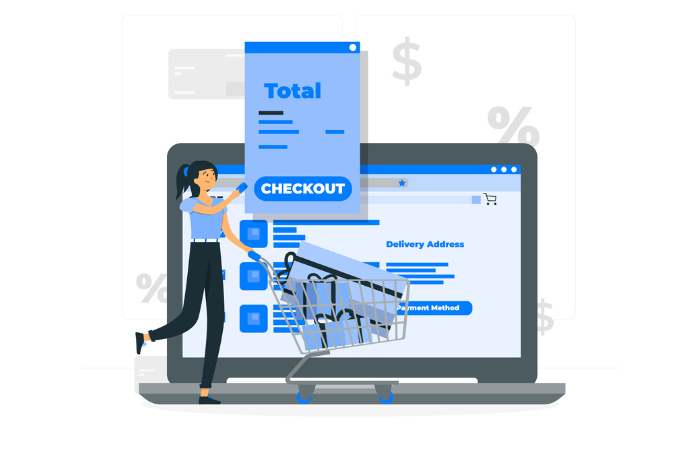E-Commerce SEO
We wrote this article to inform those looking for more information on how eCommerce SEO can help increase traffic to their website. In order to increase conversions from your e-commerce product pages, begin by understanding the basics of SEO. We will discuss important matters such as the layout of the website and navigation features to assist customers in finding what they need quickly.
For e-commerce websites, achieving the top ranking in search engines is of paramount importance. With paid search, it is possible to reach the top of the SERPs, but the long-term cost of staying there may not be sustainable. eCommerce SEO can assist you in gaining the top position.
It provides step-by-step explanations of eCommerce SEO strategies in this comprehensive guide and provides tips and strategies for optimizing your website as effectively as possible.
What Is The Significance Of SEO In E-Commerce?
The majority of consumers begin their online shopping journey by using Google search, with the top search result receiving over one-third of all clicks. It should be evident how vital it is to rank higher in search engine results.
Aside from increasing user traffic and sales, eCommerce SEO can also increase brand awareness and target previous website visitors who did not purchase.
The majority of experts who were asked about the channels that provided the best results for e-commerce websites listed SEO. How come? In order to promote a sustainable flow of traffic, SEO requires an initial investment and ongoing work.
Other than that, you do not have to continue spending money on social media campaigns to see results. Increased organic search traffic and higher search engine rankings can be achieved by using search engine optimization. The reason we need to optimize our websites and product pages is that so many users use Google to make research decisions about their purchase decisions, both at home and while traveling.
Keyword Research
Keywords (occasionally called ‘head terms’) receive a high level of organic traffic from search engines (i.e., a high volume of search queries). If you sell women’s clothing, include words like “black leggings,” “women’s leggings,” and “leggings” among your search terms.
In addition to various keyword tools, such as Google Keyword Planner, Moz Keyword Explorer, and Ahrefs Keyword Generator, you can identify the main keywords for your product using other research tools. Furthermore, you can use the search function to find common business terms. There are a lot of keywords that are associated with “leggings” in the search engine.
Make Your On-Page SEO Effective By Using Keywords
First, make sure that the pages of your website are optimized for search engines. The selection of the primary keyword, along with two to four LSI (Latent Semantic Index) keywords, is really the most important step in optimizing content.
- Every 100 words or so, include your target keyword logically.
- Use the LSI keyword at least once every 500 words.
- Use primary keywords in headlines, subheadlines, titles, meta descriptions, and URLs.
- Make each web page at least 500 words long.
- Avoid writing more than 75-word paragraphs.
- Make use of images, charts, and infographics to enhance the content.
To simplify the SEO process on your page, you can use WordPress plugins such as RankMath and Yoast SEO.
Competitors’ Analysis
Knowing your competitors will allow you to beat them. Analyze your competitive landscape and determine the areas in which you are weakest. To achieve this, follow these five steps:
- Make a list of your competitors and their products
- Identify three to five of your closest competitors (in terms of product/service delivery and target audience)
- Review their websites using SEO tools
- Indicate areas that can be improved (e.g., slow loading times, poor images, absence of internal links).
- You should identify your competitors’ top keywords, top referring sites, and top backlinks (i.e., links from other sites to their websites).
When you have collected this information, you can use it to formulate an E-commerce SEO strategy that targets your competitors’ weakest areas.
Develop Buyer Personas
Consider the buyer’s persona as a starting point. Audience data refers to basic characteristics such as age and gender, while buyer personas indicate a buyer’s personality, values, and needs. The buyer persona is intended to assist in answering the question, “What do customers want, and why?”
The creation of a Buyer Persona can assist you in identifying what motivates your website visitors. You will be able to choose the appropriate keywords for your e-commerce SEO strategy based on this understanding. An effective buyer persona is developed by collecting customer data through market research, analyzing this information, and creating a profile.
Wrapping Up
Generally speaking, the principles of eCommerce SEO are the same for e-commerce stores as they are for other types of websites. To improve your store’s visibility, you should focus on finding and targeting the most relevant keywords, using them wisely in meta descriptions and product descriptions, as well as earning quality backlinks. By automating the generation of Metas, sitemaps, alt and canonical tags, etc. for your Magento e-commerce store, you can reduce your SEO efforts.

